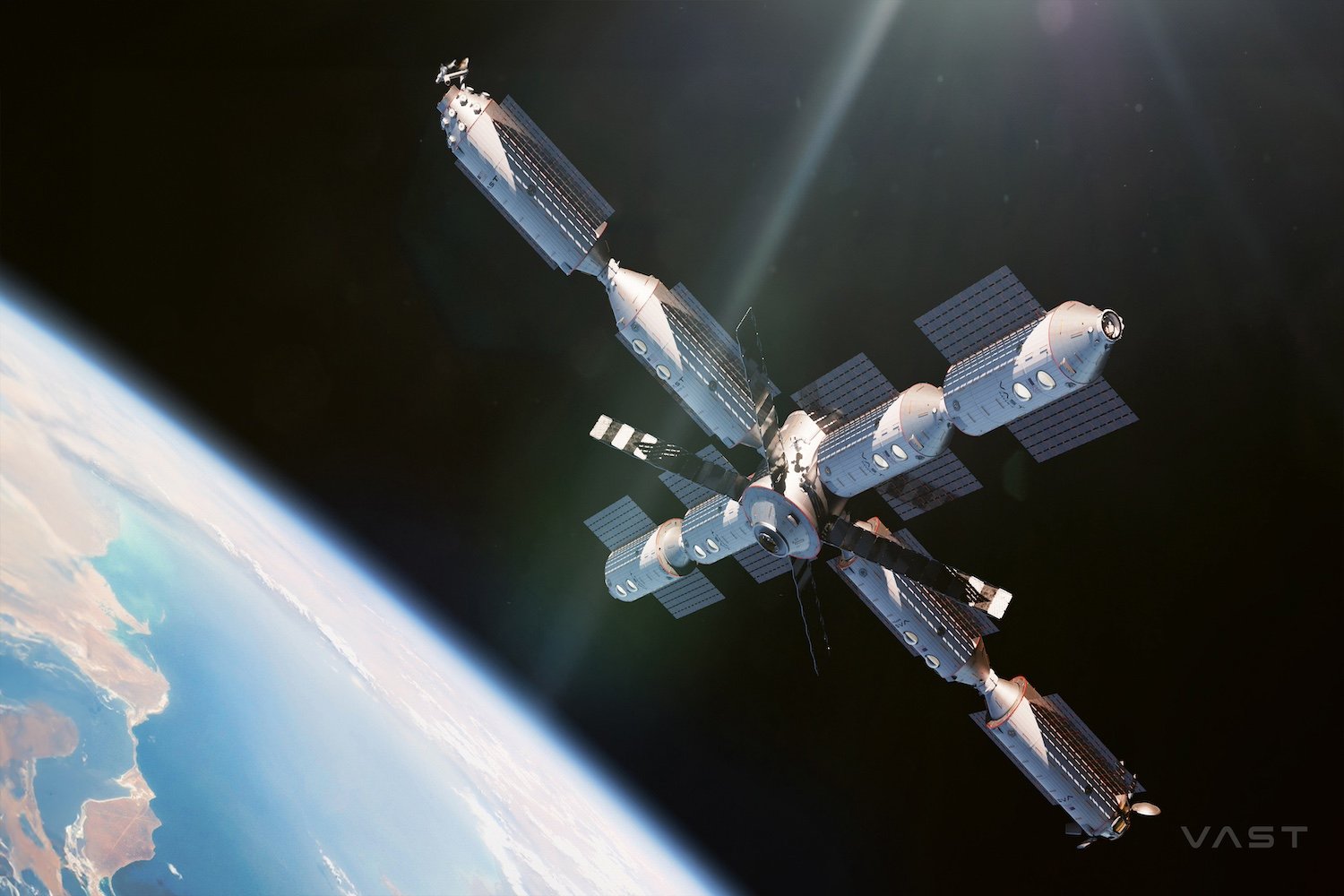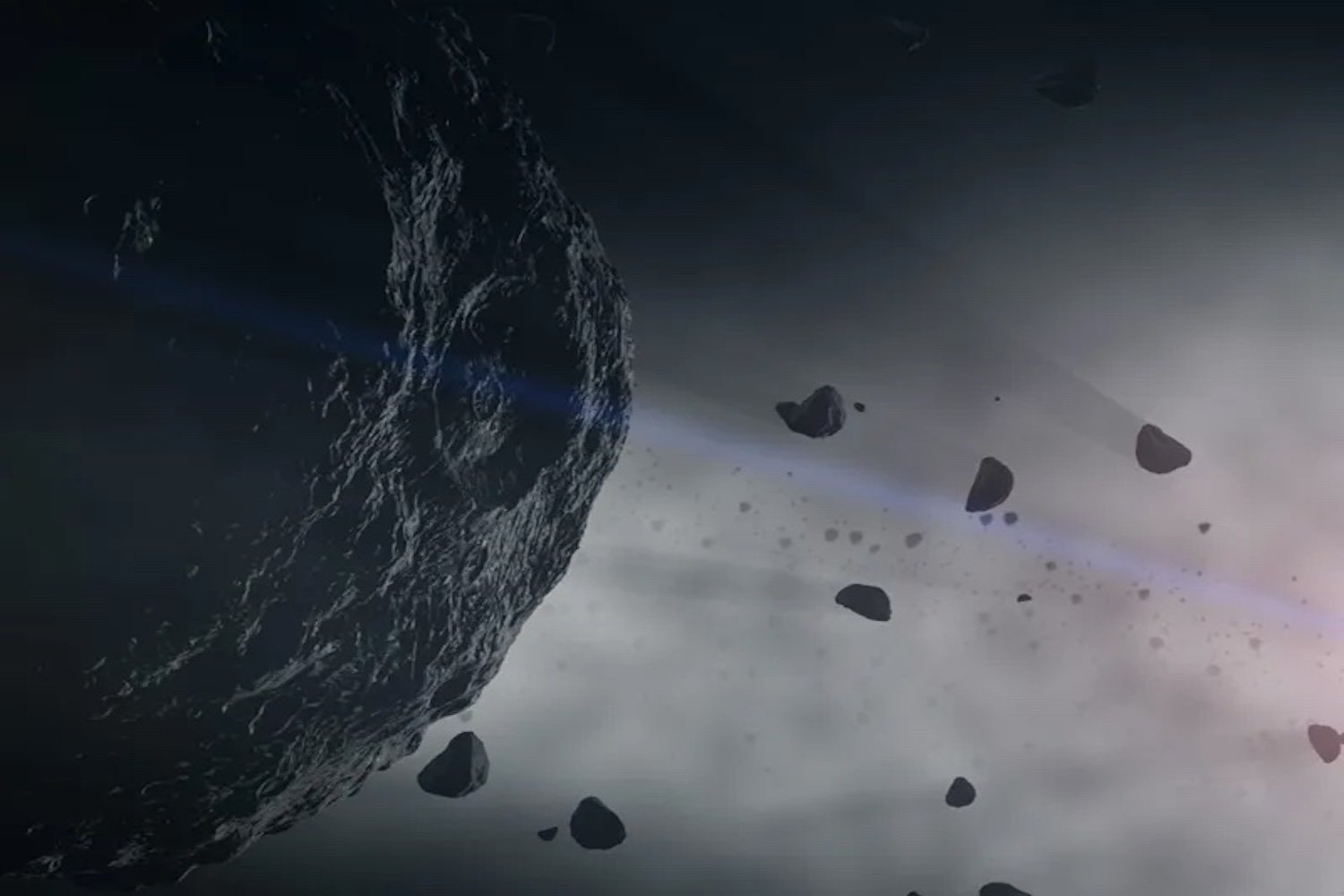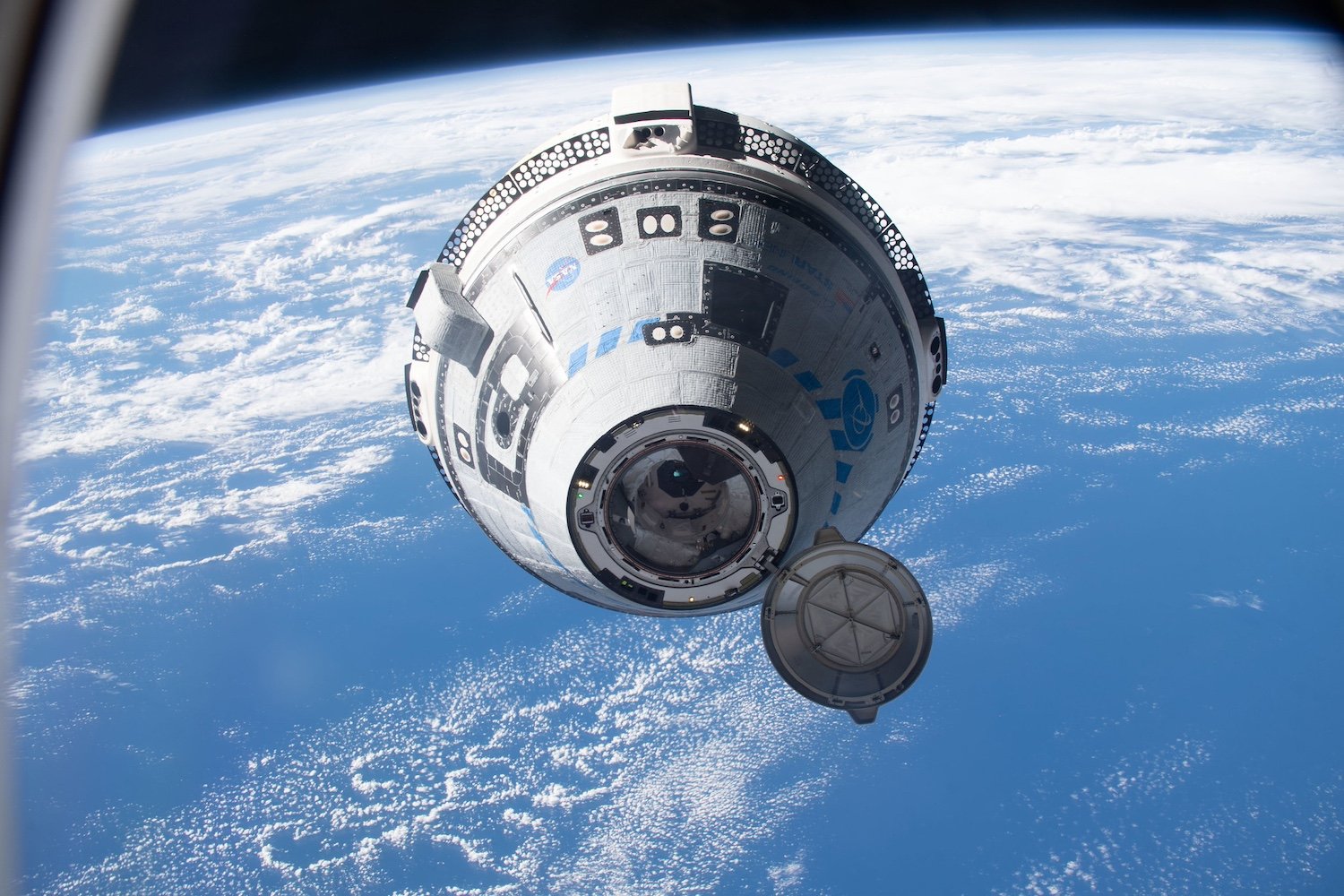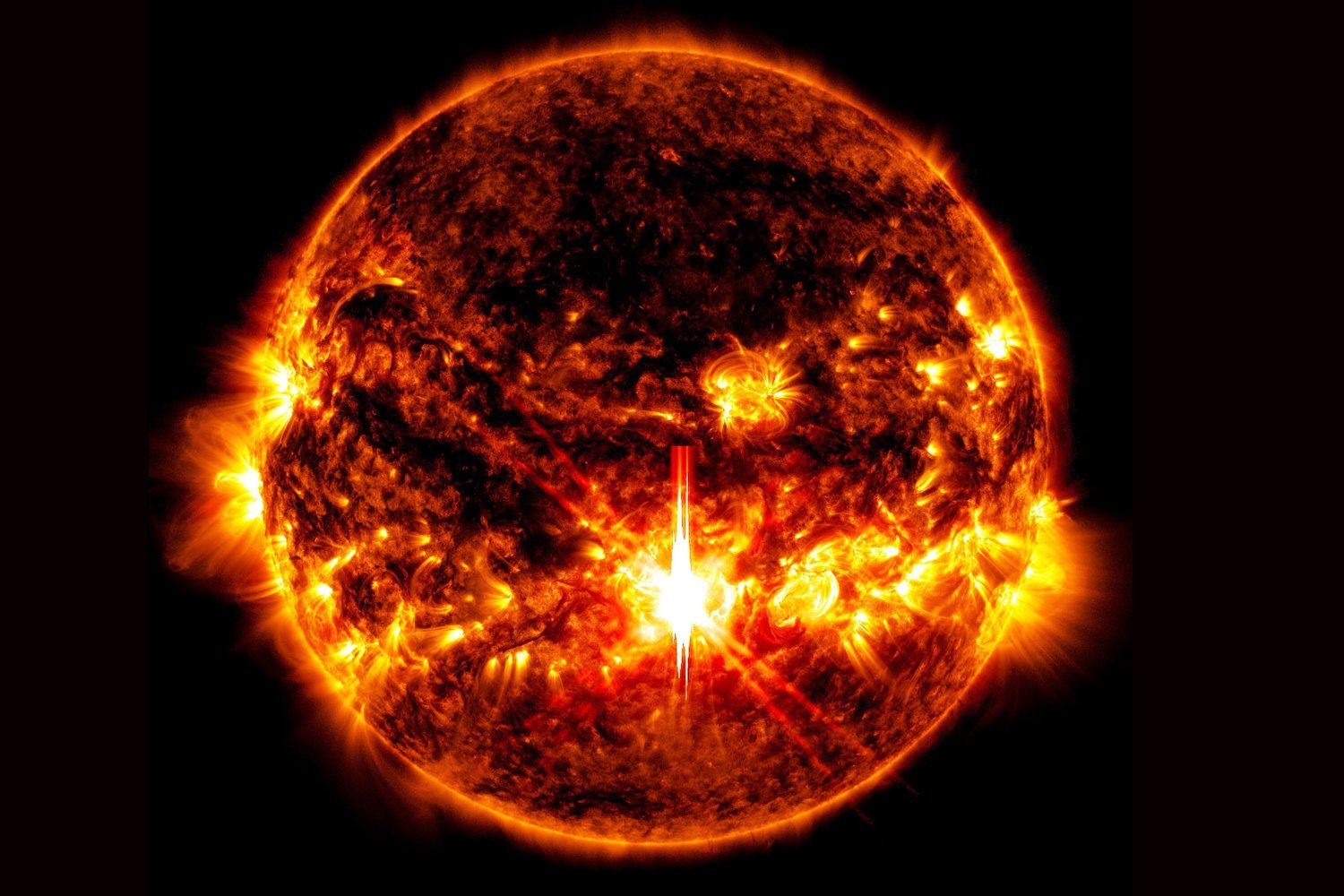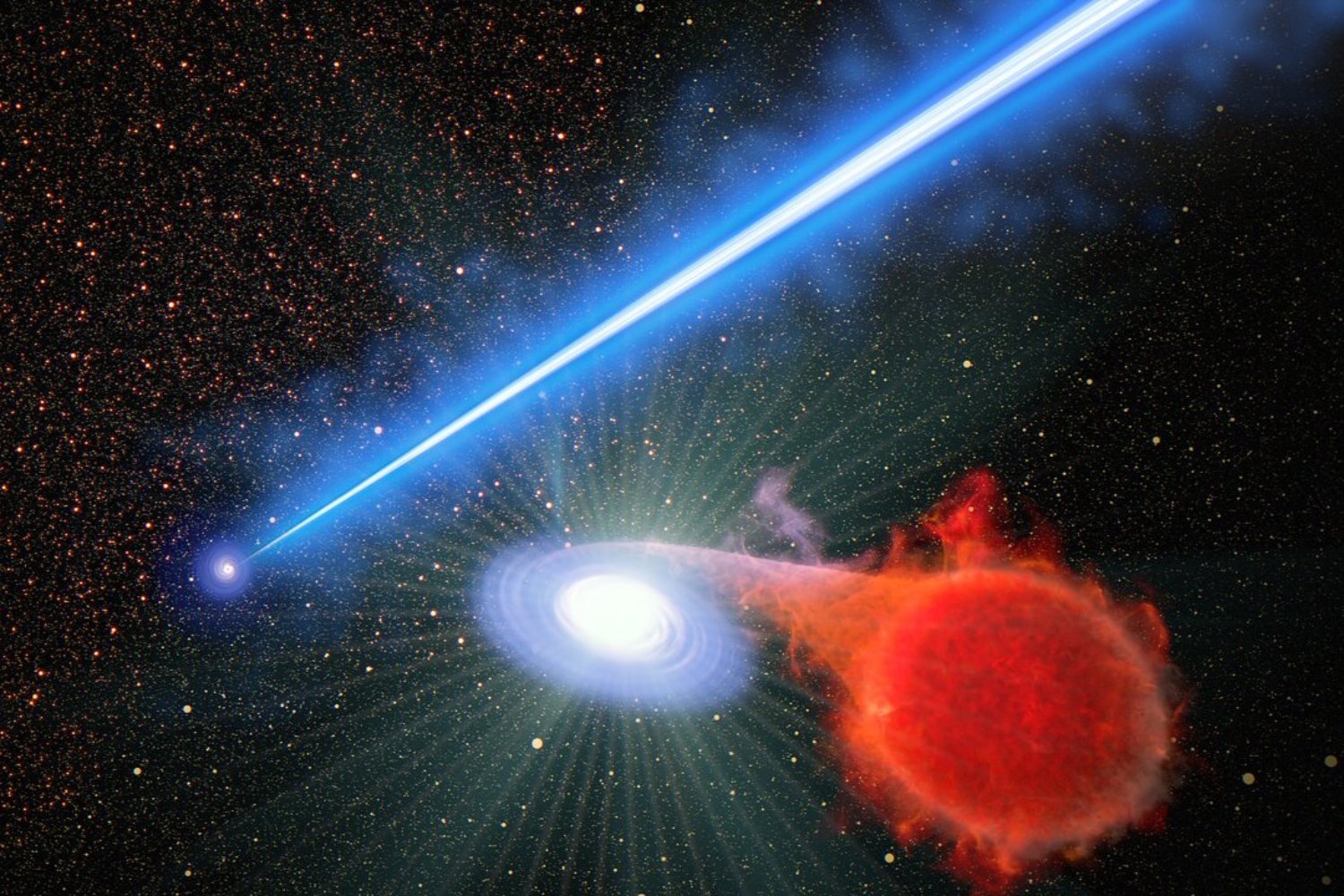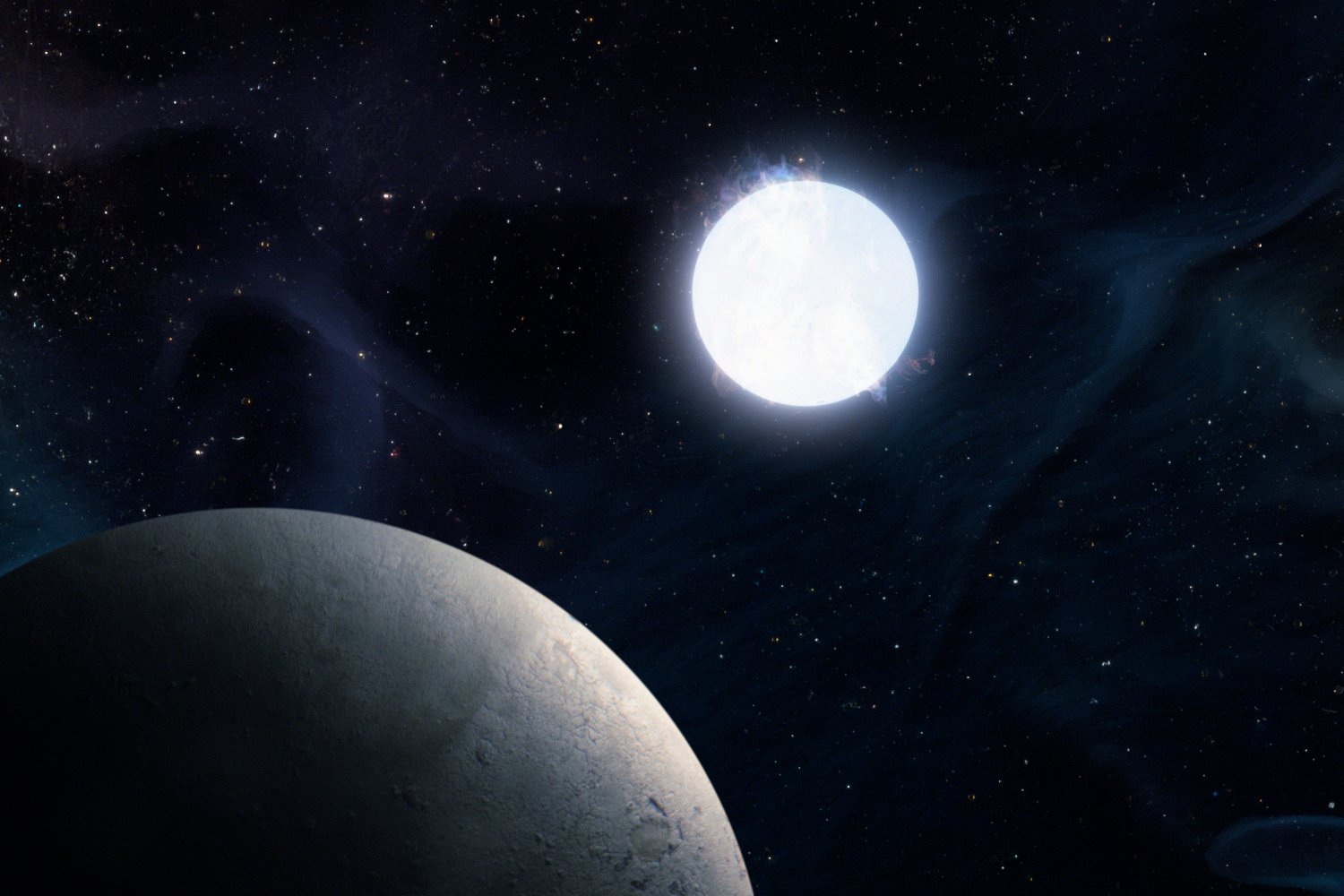The International Space Station (ISS) has been a cornerstone of low Earth orbit research for over 25 years. However, its lifespan is nearing its end, prompting NASA to seek a replacement. Vast Space, a California-based company, has stepped into the spotlight with its ambitious proposal for Haven-2, a commercial space station designed to potentially succeed the ISS.
Vast Space aims to secure a contract through NASA’s Commercial Low Earth Orbit Destinations (CLD) program, with plans to launch the initial Haven-2 module as early as 2028. This ambitious timeline would see a two-year period of co-existence between the ISS and Haven-2 in orbit.
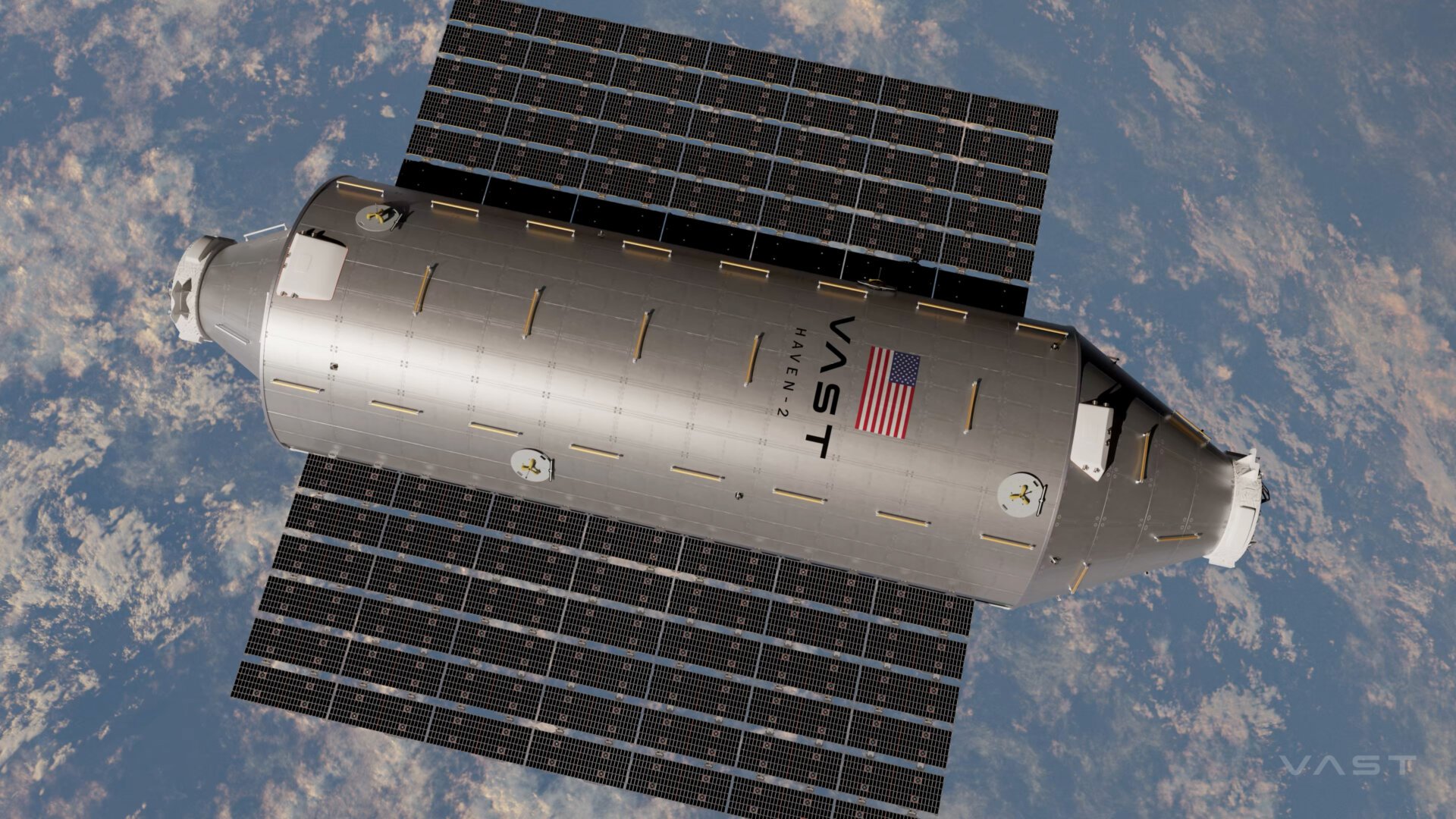 An illustration of Vast-2’s first module in space. Credit: Vast
An illustration of Vast-2’s first module in space. Credit: Vast
Prior to Haven-2, Vast is developing Haven-1, slated for a 2025 launch. Haven-1, a single-module station, is projected to be the first commercial space station, accommodating short-duration missions for up to four astronauts. Vast CEO, Max Haot, emphasizes the company’s focus on securing the NASA CLD contract and building the ISS successor, using Haven-1 as a demonstration of their capabilities.
NASA’s Vision for a Commercial LEO Future
NASA intends to decommission the ISS by 2030, initiating a controlled deorbit and atmospheric re-entry. The CLD program, established in 2021, aims to replicate the ISS’s success through commercial partnerships. NASA’s role will shift from builder to customer, supporting commercial partners in the development and operation of future space stations.
Haven-2: A Modular Design for Expansion
Vast’s proposed Haven-2 will be launched using SpaceX’s Falcon Heavy rocket. Following the initial module deployment, three additional modules are planned over the subsequent two years. These four modules will be connected linearly, with a larger core module and four further Haven-2 modules envisioned between 2030 and 2032, ultimately forming a T-shaped configuration.
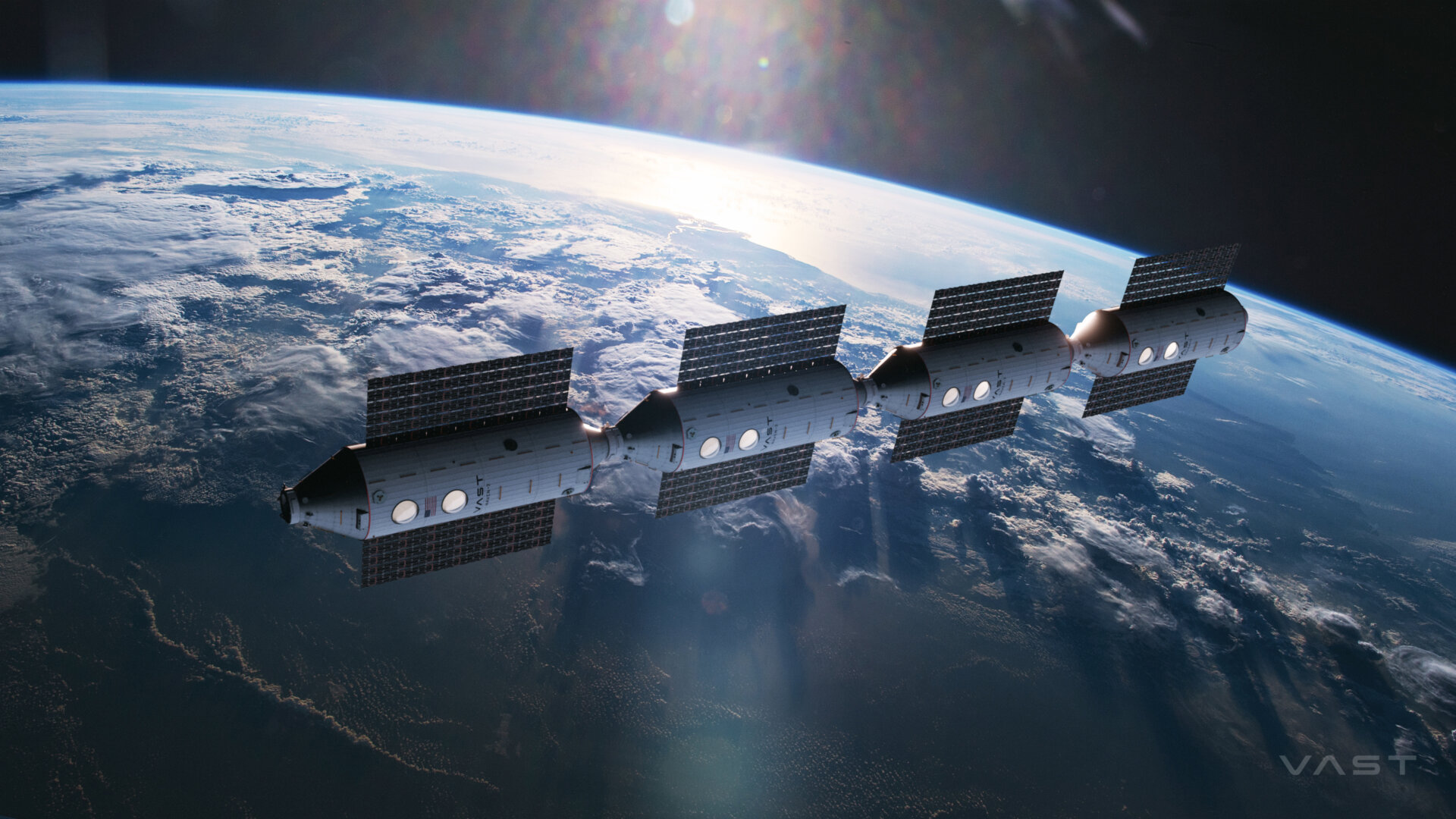 An illustration of the four modules in space. Credit: Vast
An illustration of the four modules in space. Credit: Vast
Haven-2 will be equipped with a dedicated microgravity research and in-space manufacturing lab, a cupola observation window akin to the ISS’s, a robotic arm, a payload docking airlock, and a separate spacewalk airlock. Significantly, an entire module will be allocated for international partnerships.
Competition and Challenges
Vast Space faces competition from other prominent players in the space industry, including Axiom Space, Blue Origin, and Northrop Grumman, all vying to develop the next-generation space station. While Vast displays confidence in their timeline, the ultimate decision rests with NASA.
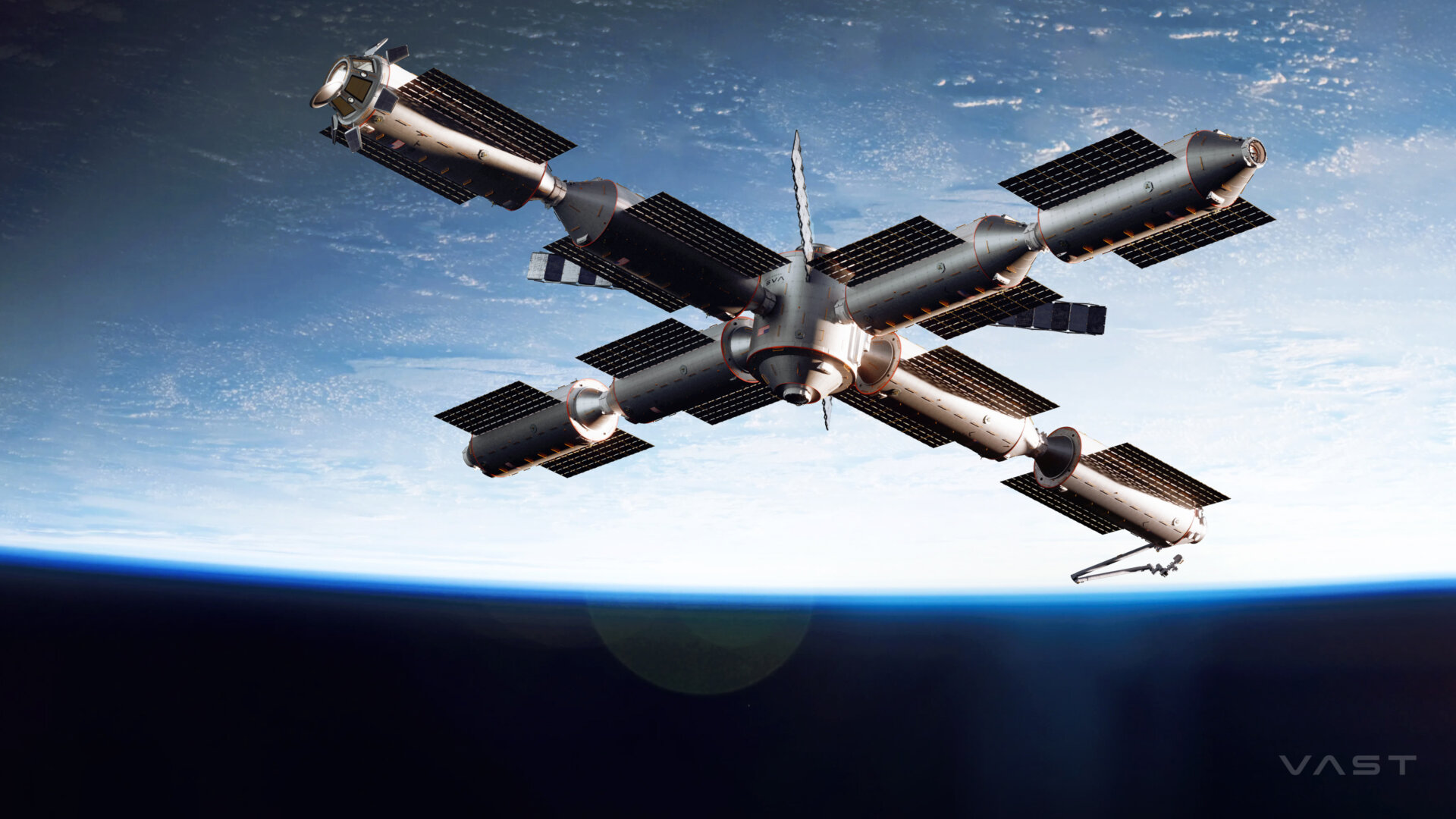 Haven-2’s full configuration. Credit: Vast
Haven-2’s full configuration. Credit: Vast
The aging ISS presents ongoing challenges for NASA, with recent reports highlighting the wear and tear from prolonged exposure to the harsh space environment. The selection of a successor is crucial for maintaining a continuous human presence in low Earth orbit and advancing scientific research and commercial opportunities in space.
The Future of Low Earth Orbit
Vast Space’s Haven-2 offers a compelling vision for the future of commercial space stations. The modular design, focus on international collaboration, and ambitious timeline position it as a strong contender in the race to replace the ISS. However, the final decision will depend on NASA’s assessment of Vast’s proposal against the backdrop of competing bids and the evolving landscape of low Earth orbit development.



